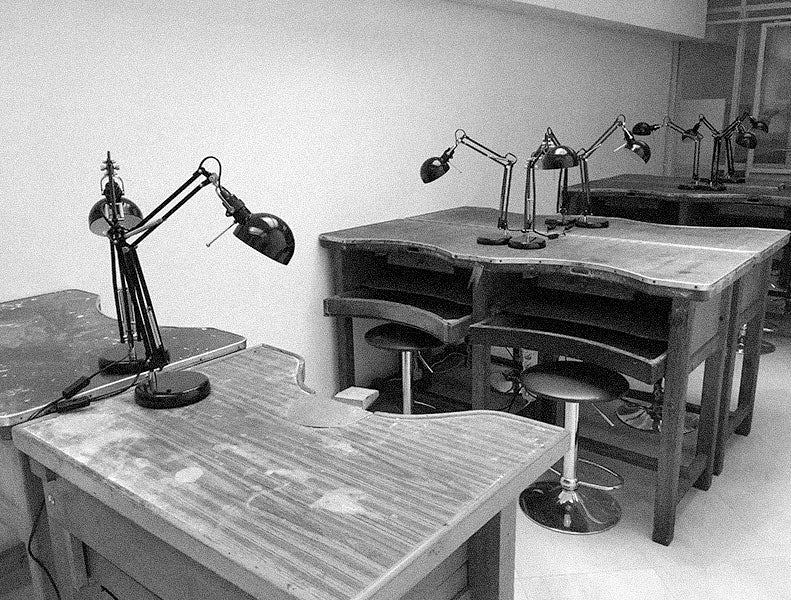
The first day of my internship I was asked not to wear a skirt, which I found strange. I was seated at a huge old wooden work table equipped with blow torches that kept a low flame burning all day, almost invisible at daylight. On the opposite side of the table, sat the workshop manager and the most skilled goldsmith - always attentive behind his thick lens glasses. Almost blind, the goldsmith spent a lifetime fixating on the tinniest details, he could however, still execute his craft with incredible perfection. As I leaned over the table to observe the master's nimble hands at work, I felt my arm slowly warming until I realised the sleeve of my smock was burning, causing much amusement and laughter to those sad men, clinging to that table since childhood. The only woman in a men's workshop…
The workshop was on the fifth floor of a Pombaline architectural style building dating from the 18th century. Without an elevator, climbing 5 sets of stairs made us arrive almost breathless. Every morning a bronze front door bell rang. It was time to lower the wicker basket with a pulley installed at the top of the building. Thus, the mailman was spared a difficult and time-consuming climb. The rooms were all inhabited by antique furniture creating an atmosphere that would make anyone travel back in time. In one of the rooms there was an old rolling mill, a giant iron monster dominating the space and gaining ground on the foundry area. In another room there was a large wooden desk with lots of drawers, filled with jewellery drawings made over the years. Relics kept for more than100 years that would require many years of practice, expertise and technical abilities to be accomplished. Everything was in a tidy chaos, only the master understood. At the end of the corridor there was a small room with an old polishing motor. The only electric device in the workshop! In the main room, a table sat the jewellers on benches. Each workstation was equipped with a goldsmith`s saw frame, a blowtorch and a welding plate. Here I learnt how to use the hand powered pump drill, an old mechanical instrument designed to rotate in opposite directions and drill through metals.
In a metallic box there were steel sewing needles, waiting to be worked out into drills the required thickness. At the bottom there was a small ceramic bowl with bath for pickling parts after soldering. This solution of sulphuric acid acid and water was prepared in a complete lack of rigor and tested in the most unbelievable way. The one who prepared it, would try it putting a drop on the tongue tip and see if it stung. If it did, then it would be well prepared. Some years later I would see the same weird method being used at my workshop by an intern, that had learnt it at school. Fortunately we now use an ecological pickling! A pair of steps gave access to the attic where there was a small studio. The door was kept closed all day. Inside, an old man plated metal with gold, silver or rhodium in absolute silence, as if he was working in secrecy. I never saw anyone trespassing that door and plating was the only technique I wasn´t allowed to learn. I ended up learning it some time later after a lot of research, trial and error. I travelled through time for a year and along this journey I had an extraordinary learning experience both in technical terms and workshop procedures as well as tricks you don`t learn at school, most of them I still use in my own workshop.




